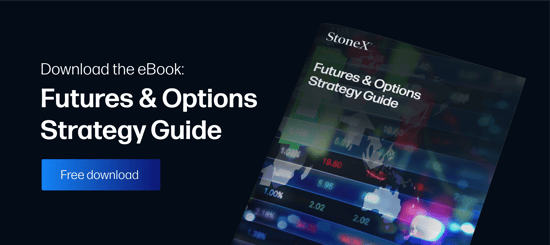The line of micro futures products offered by the Chicago Mercantile Exchange (CME) offers traders a collection of distinct advantages. Featuring reduced contract sizes, tick values, and margin requirements, the E-micros and Micro E-minis are appealing contracts for traders of all experience levels.
With products facing metals, currencies, and equities, micro futures are quickly becoming the go-to instruments for active traders interested in some of the world’s most popular asset classes. Let’s take a look at the three primary benefits of engaging with these exciting markets.
Benefit #1: Capital Efficiency
Capital efficiency is traditionally viewed as the relationship between businesses, operational expenses, invested capital, and returns. To the active trader, capital efficiency refers to how well monetary resources are used. For a vast majority of retail participants, getting the most out of risk capital is key to succeeding in the market, and in many ways, micro futures help participants do just that.
The E-micros and Micro E-mini products promote capital efficiency in a number of ways:
- Customizable exposure: The E-micro and Micro E-mini contracts let the trader customize risk exposure through modifying position size with enhanced granularity.
- Reduced fees: The smaller contract size is reflected by a reduced “all-in” commission and fee structure.
- Reduced margin requirements: Due to a ten-fold reduction in contract size, initial, intraday, and maintenance margins are much lower. This is important because the capital needed to maintain an open position is minimal in comparison to that of E-mini or full-sized contracts.
If you’re looking to fine-tune your exposure to the gold, equities, or currency markets, then the E-micros and Micro E-minis can be a valuable part of your trading plan.
Benefit #2: Strategic Freedom
The reduced market exposure offered by E-micro and Micro E-mini contracts brings many new strategies into play. Reduced tick values and margin requirements make it possible to hold open positions through the daily and weekly closes; this boosts strategic options exponentially. These attributes also free up the trader to take on larger position sizes, making advanced strategies such as multi-bracket orders possible.
One of the big drawbacks of true intraday or day trading is that the account must be net-flat at the close of each session. This is due in large part to the extensive overnight margins associated with holding an open long or short position through the market close. A quick comparison of the Micro E-mini S&P 500 and E-mini S&P 500 per contract margin requirements illustrates this point:
| Product | Intraday Margins | Maintenance (Overnight) Margins |
|---|---|---|
| Micro E-mini S&P 500 | $100 | $630 |
| E-mini S&P 500 | $500 | $6,300 |
In addition, the fact that the Micro E-mini S&P 500 is one-tenth the size of the normal E-mini contract reduces the minimum tick value to $1.25 per contract. This is a huge difference from the E-mini S&P 500’s $12.50 per tick, making it possible for retail traders with limited capital to put on larger positions without fear of violating brokerage margin requirements.
Benefit #3: Diversity of Asset Classes
As we discussed earlier, the E-micros and Micro E-minis offer active traders access to a wide variety of asset classes. Popular contracts such as gold, the S&P 500, and the EUR/USD are all at the ready for active trade. Aside from energies, micro futures have something for every trader, regardless of specialty.
Here are CME’s many premier E-micro and micro E-mini contracts:
| Product | Asset Class | Symbol |
|---|---|---|
| E-Micro Gold | Metal | MGC |
| E-Micro EUR/USD | Currency | M6E |
| E-Micro AUD/USD | Currency | M6A |
| E-Micro GBP/USD | Currency | M6B |
| E-Micro JPY/USD | Currency | MJY |
| Micro E-mini S&P 500 | Equities | MES |
| Micro E-mini NASDAQ-100 | Equities | MNQ |
| Micro E-mini DOW | Equities | MYM |
| Micro E-mini Russell 2000 | Equities | M2K |



